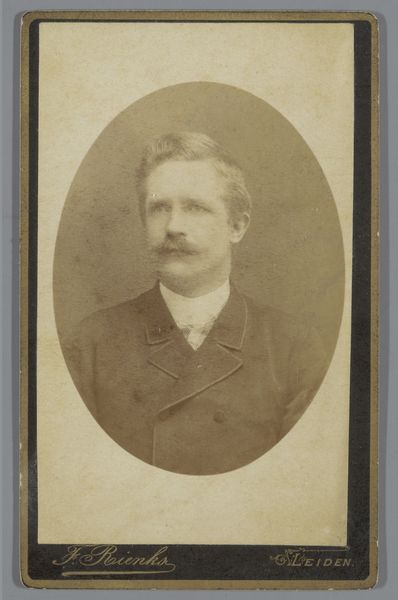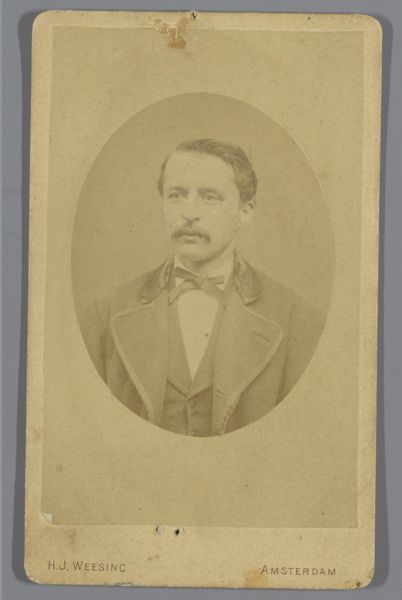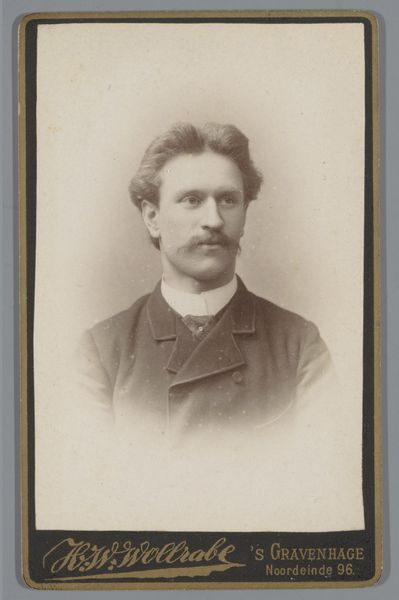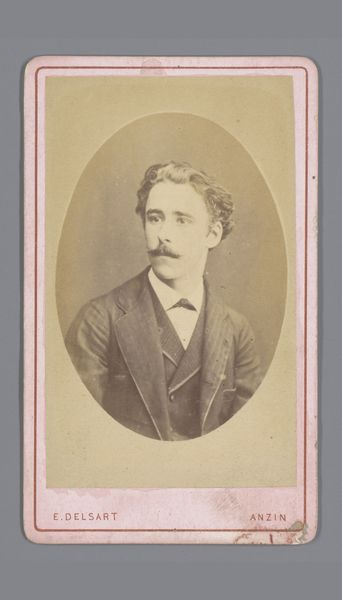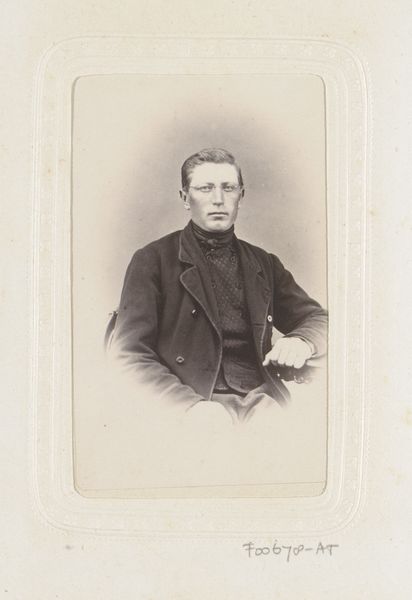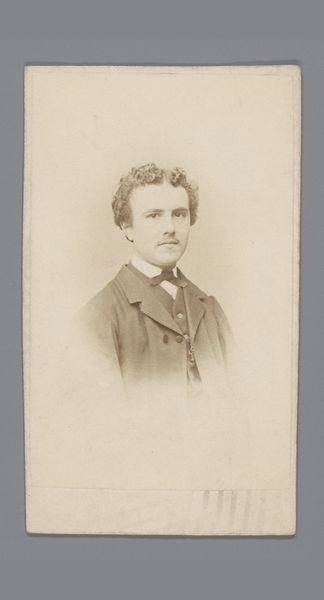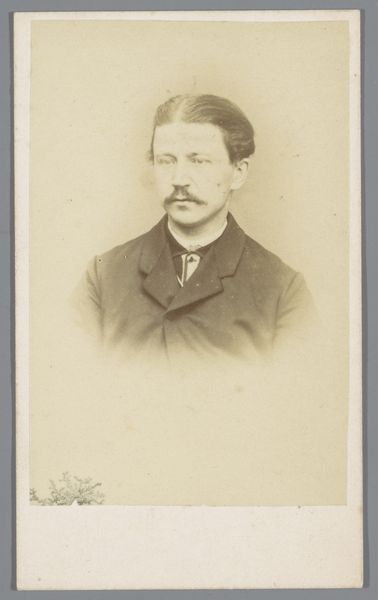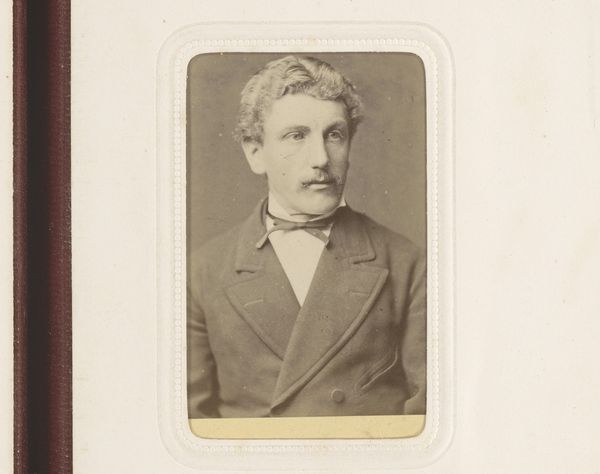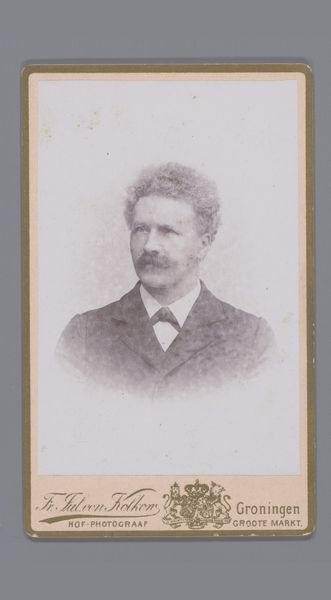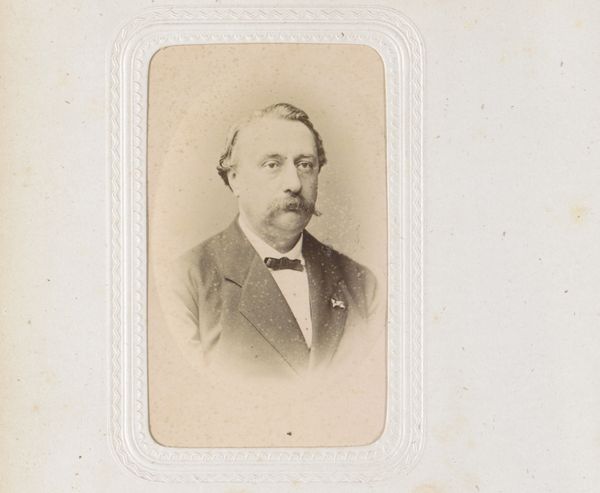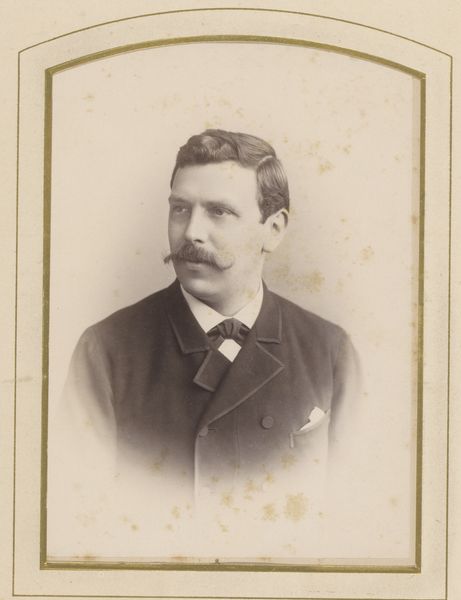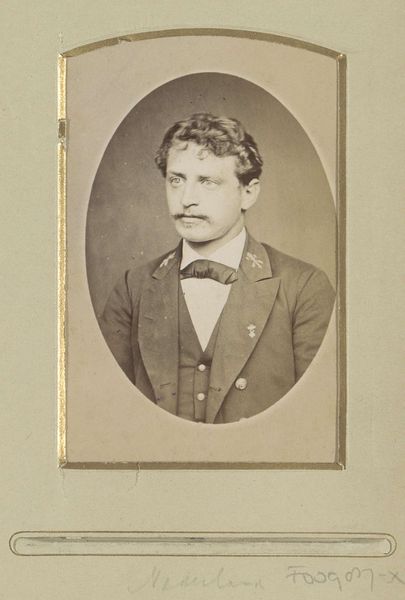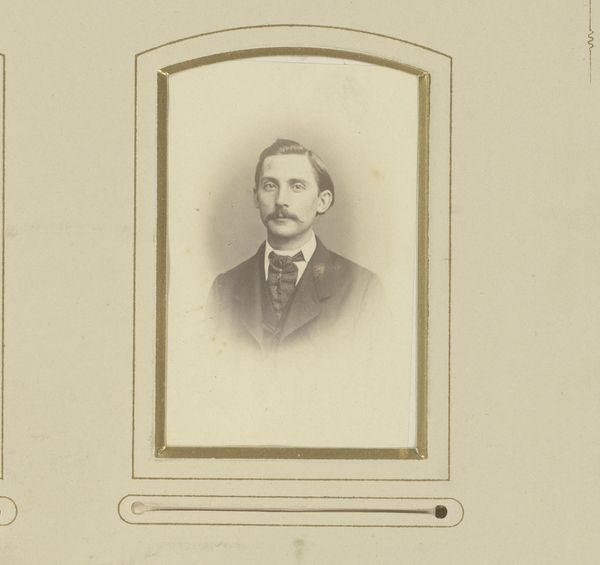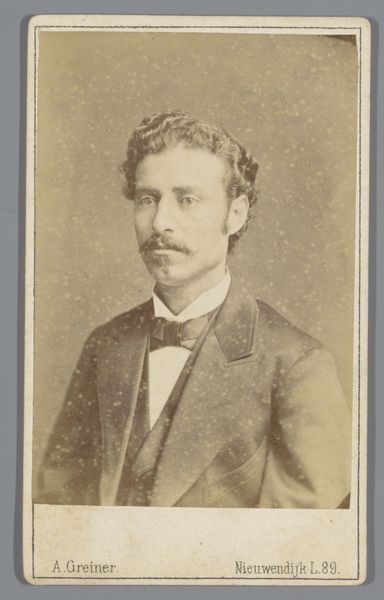
photography
#
portrait
#
photography
#
realism
Dimensions: height 105 mm, width 63 mm
Copyright: Rijks Museum: Open Domain
This small portrait was made in Rotterdam by E. Cornelisse, using photographic processes that were then revolutionizing image-making. Photography in this era was a complex blend of science and craft. Each image required careful preparation of the glass plate negative, involving coating it with light-sensitive chemicals in a darkroom, then exposing it in the camera, and developing it before the plate dried. This photograph, likely an albumen print, would have been made by coating paper with egg white to create a glossy surface, before placing the negative on it and exposing it to sunlight. The sepia tone comes from the chemical development of the image, as it reacts to the light. The rise of photography democratized portraiture. The burgeoning middle class could now afford to have their likeness captured, fueling a demand for skilled photographers like Cornelisse, and transforming the way people saw themselves and their place in society. This photograph isn't just a picture; it's a testament to the changing landscape of art and labor in the industrial age.
Comments
No comments
Be the first to comment and join the conversation on the ultimate creative platform.
